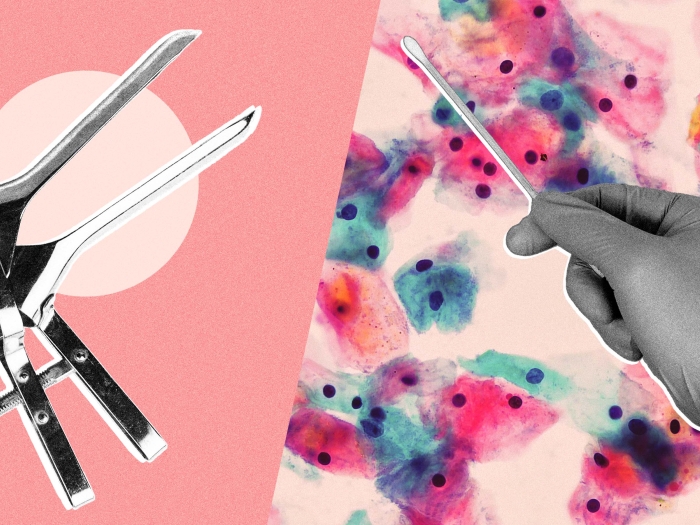Research suggests that, for many women, a simple change in thinking could dramatically improve bladder control.
5:00 AM
Author |

If your bladder leaks when you cough, sneeze, or laugh, or it triggers every time you come home–-even if you left 10 minutes ago––you're not alone.
It's thought that 30-50% of women will experience some sort of bladder issue by middle age. This problem worsens with age, but many women still hate talking about incontinence, even with their health care provider.
But for Janis Miller, Ph.D., a professor at the University of Michigan School of Nursing and Medical School, she's spent her career studying women's bladder health.
Her research suggests that, for many women, a simple change in thinking can dramatically improve bladder control by retraining the bladder to respond differently to common urge triggers. For other women, simple, well-timed pelvic floor contractions (not the hundreds of daily Kegels you've likely been told to do) performed when the urge to urinate strikes can reduce or even solve the problem of poor bladder control.
To that end, Miller has developed a fun-to-watch, 15-minute web tutorial called My Confident Bladder that women can watch at home. The tutorial introduces skills and self-assessment tools that can help women develop healthy bladder control habits.
Here, with Michigan Health, Miller talks more on the topic.
What's the most important fact about bladder control that you wish women knew?
Miller: Bladder control starts in your head. There are both conscious and unconscious control systems, and both affect the other. But intent (conscious control) is really powerful when a woman has the right information about her own body. She can use that information to put bladder control into her own hands, in an individualized specific fashion.
It doesn't mean that conscious control systems will solve everything for everybody, but why not try this do-no-harm approach first? These steps can be supplemented with other forms of support for bladder control, which can be offered by the health care provider who is a specialist in continence care.
Like Podcasts? Add the Michigan Medicine News Break on iTunes or anywhere you listen to podcasts.
You developed MyConfidentBladder.com to educate women about bladder health and preventing common bladder problems. Can you talk more about this website?
Miller: The website emphasizes several principles: First, know your triggers, and determine if it's a real urge to pee or an urge resulting from a conditioned behavior.
For example, if you've been out for, let's say four hours shopping, and you haven't gone, and you get home and have the urge, that's probably real. But if you emptied your bladder at the store just before coming home, and still get the urge on arriving home, that's likely a conditioned response. And it can be quite strong, but unnecessary.
The second principle is to make use of a conscious body cue that uses the same muscles as Kegel exercises to override that conditioned pattern and suppress the urge to pee. Take the shopping example. On the way home you can use a conscious body cue, light contractions of the pelvic floor, just a few, to signal the brain that it's not time for the bladder to produce an urge sensation. This cueing translates into the brain telling the bladder to calm down, it's not time to go. In this way, you suppress the unconscious overreaction to patterned anticipatory urge on arriving home.
I'd like for each woman to have simple tools handy to determine what's best for her to manage her bladder throughout her day.Janis Miller, Ph.D.
Currently, we often ask women to do many repetitious Kegel exercises, but these exercises are isolated from a moment of leakage risk. Why not first try just one or two little pumps to prevent a trigger moment because that may be all that's needed? Let's get women in the habit of grabbing that muscle at the right time. This technique is sometimes called "the Knack." It's not an acronym. It just means a simple body trick – like remembering to sit up straight when you catch yourself slouching.
A third principle is for women to grip that pelvic muscle, simultaneously, with a cough or sneeze, or when lifting something heavy—or anytime that intra-abdominal pressure increases and puts pressure on the bladder. This gives a mechanical support and closes the urethra, so you don't leak.
Finally, women must understand their own bladder patterning. Bladder patterning is strongly linked to beverage patterning. The only way to truly see your own bladder pattern is to keep a diary for a few days. The website gives examples of various patterns so you can quickly compare those to yours and learn how to adjust yours to the most advantageous pattern for you.
You recently published a study about a bladder health self-test you developed for women. What did you find?
Miller: It's a simple self-test that a woman can do at home for a better understanding of her own bladder health, and has information that she may want to share with her health care provider.
The paper towel test is mainly to indicate the degree of leakage with activities such as coughing. Results can help clinicians understand which part of the bladder/urethra system is dysfunctional and it can inform treatment.
A woman may still be told by their clinician to do Kegel exercises. She can agree to try this repetitive exercise work for three to six months, but if there's no improvement, she can return to her clinician and say, "I tried the strengthening exercises for my pelvic floor, but it's not reducing my leakage." She can also share with them that she tried the Knack body trick by saying "I tried timing a muscle contraction with a moment of expected leakage, and I found it helps some, but not enough."
MORE FROM MICHIGAN: Sign up for our weekly newsletter
Why is there so much misinformation about female bladder control issues?
Miller: Well, you know the phrase "everything but the kitchen sink"? Everything has been thrown at this common, but poorly understood issue, and then by chance when something works for one person, we think it will work for everybody.
Myths and misinformation happen more readily when individuals lack access to immediately meaningful information but trying everything isn't the correct approach.
I'd like for each woman to have simple tools handy to determine what's best for her to manage her bladder throughout her day. Tools like the paper towel test, or like a display of common toileting patterns from diaries, with descriptors for comparison to one's own individual patterns. These can yield specific information about a woman's needs.
What are the biggest bladder myths you'd like to dispel?
Miller: I'd like to see one-size-fits-all messages about beverage intake go away completely. It's confusing our bladders. We hear many messages about what and how much to drink, but these messages are nearly always completely disconnected from the most basic bladder management project of any day—toileting.
This article was originally published in Michigan News.

Explore a variety of healthcare news & stories by visiting the Health Lab home page for more articles.

Department of Communication at Michigan Medicine
Want top health & research news weekly? Sign up for Health Lab’s newsletters today!





